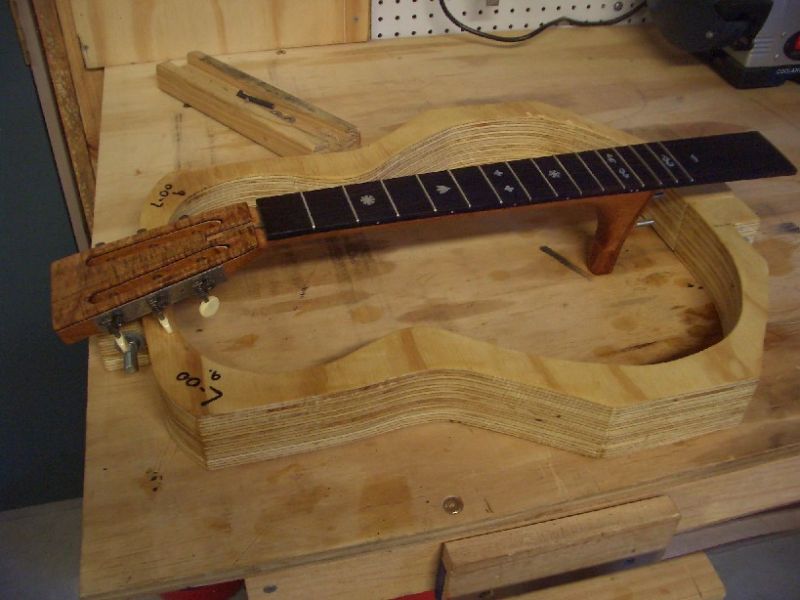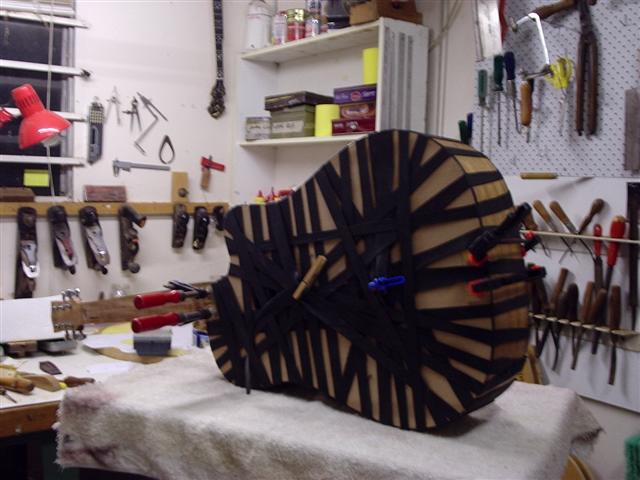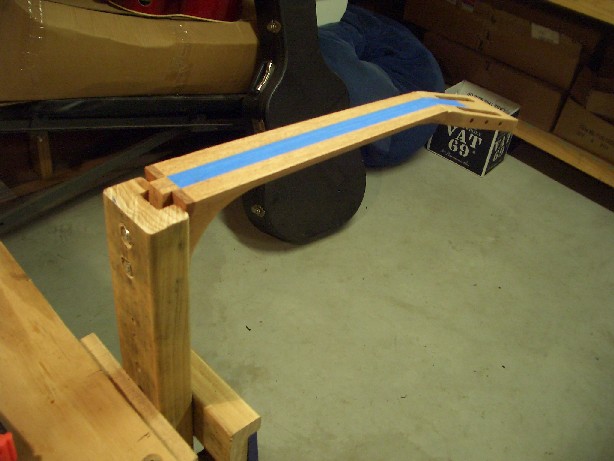
Here is the neck bolted to a slotted beam (a piece of lattice frame left over from the garden) so that it can be held securely in the vise. This gives good access from all sides.
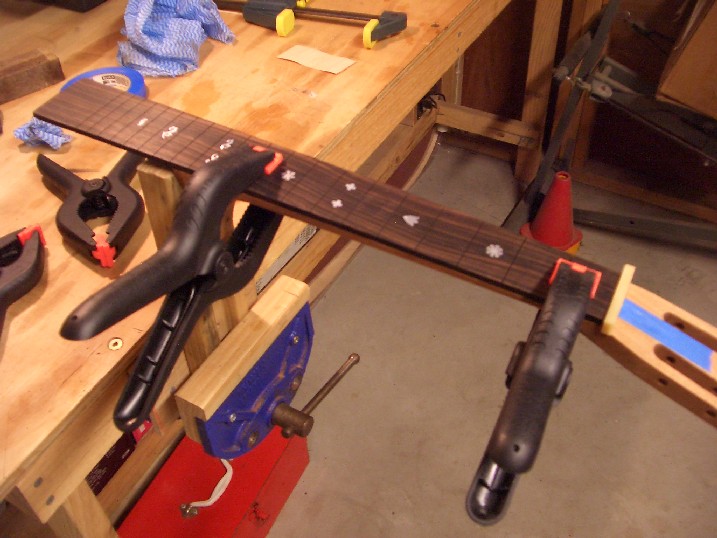
The nut blank is sitting in a pre-cut slot and now the fingerboard is located with reference to the nut and the body join (13th fret). After a dry run I glue it (Titebond, but I am keen to hear if others prefer epoxy for this joint?) and hold it in place with the clamps and headless panel pins through 2 fret slots. Then I start wrapping the rubber innertube from the nut end. The bicycle tube has been cut open along its length and then cut in halves longitudinally. You need to give it a good wash to get the powdery stuff off the inside.
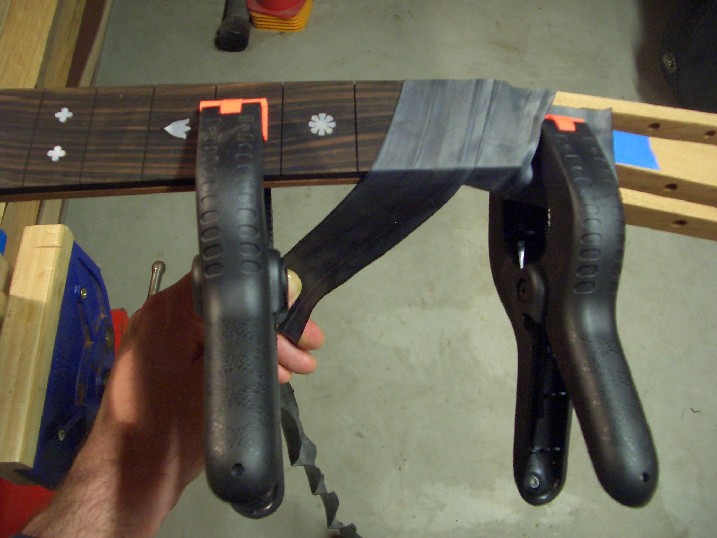
You stretch it on each turn to get nice firm clamping pressure. Don't worry about glue squeeze-out because the rubber doesn't bond to Titebond (I haven't tested this with other adhesives). You can do the whole length of the neck in only a minute or two. Move a clamp as you get to it and then replace it over the rubber. Thak an extra turn or two at the end and secure the end with a clamp.
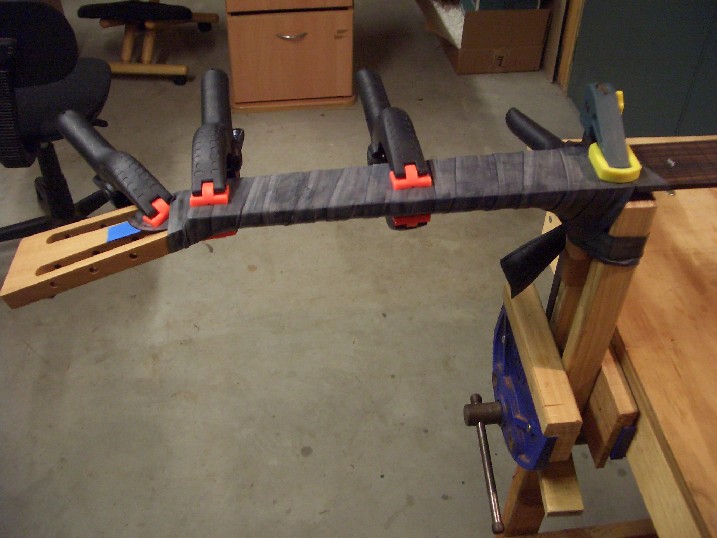
The nut blank is still there, under the rubber. I went ahead and glued the headstock veneer at the same time. Its end was cut at the correct angle to sit flush against the nut. I unwrapped a little of the rubber to expose the nut and then glued the veneer piece (curly blackwood, black fibre, maple) in place. I again held it with clamps and wrapped it with rubber tube. I put some clamps back over the middle section just for good measure. Before gluing I removed the tape covering the slot for truss-rod nut and was careful to clean up any glue there.
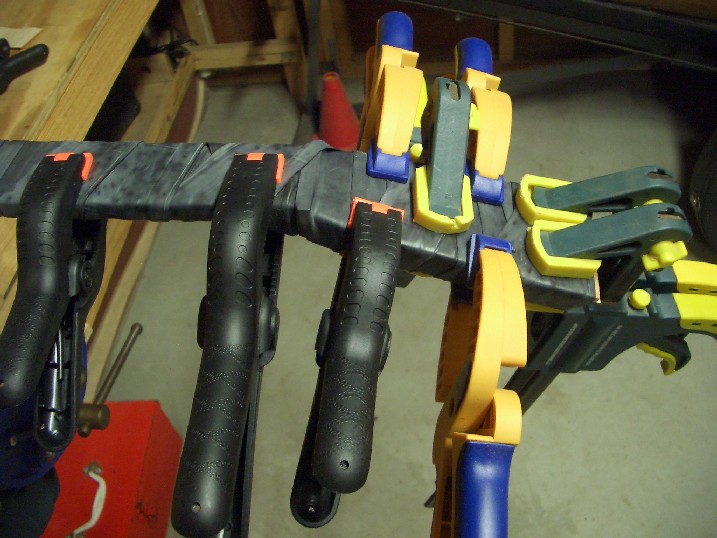
I left it clamped overnight and in the morning it was all solid and the rubber peeled off very cleanly. That tube can be used again and again. Here is a picture of the neck after shaping, radiusing, fretting and finishing.
